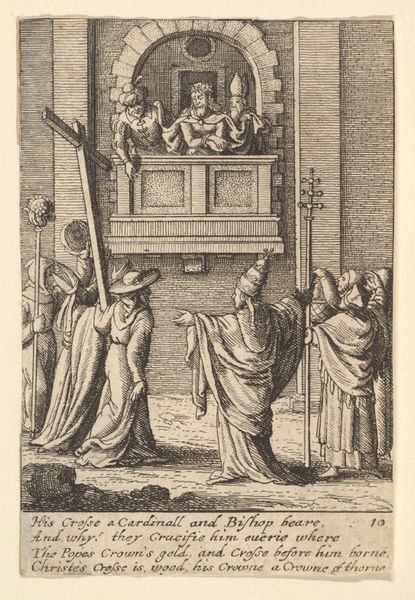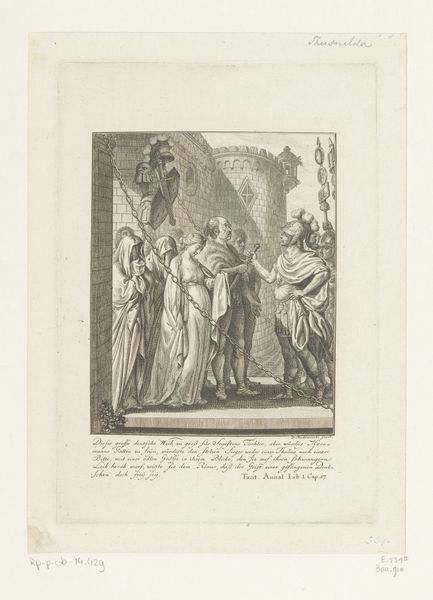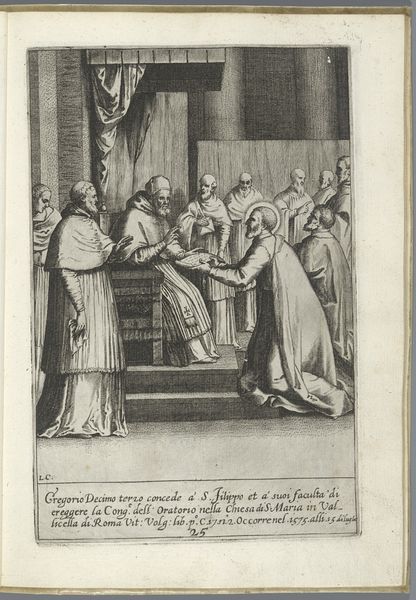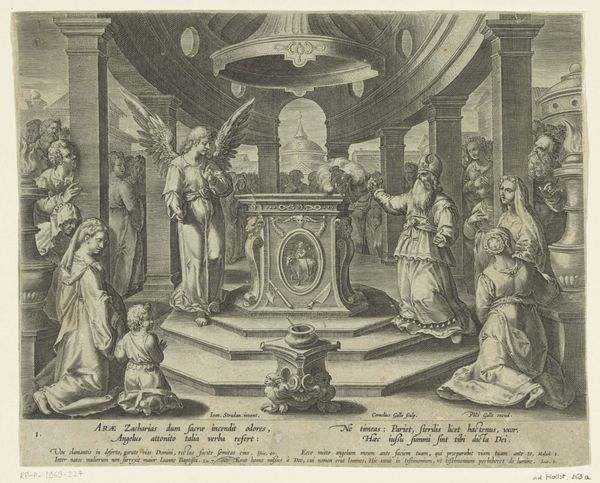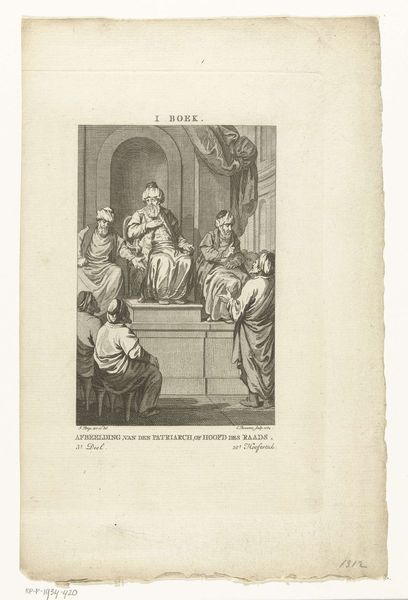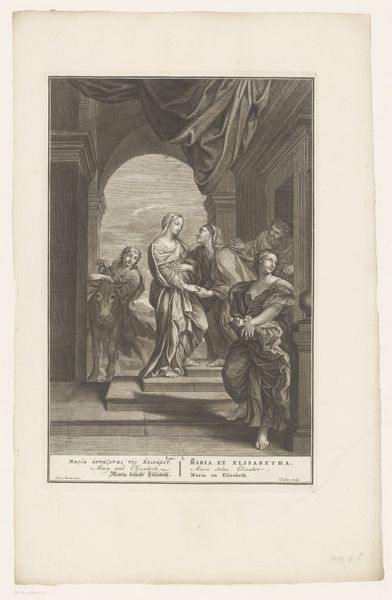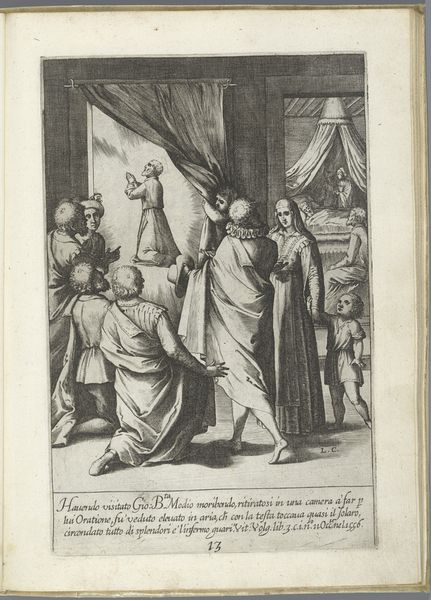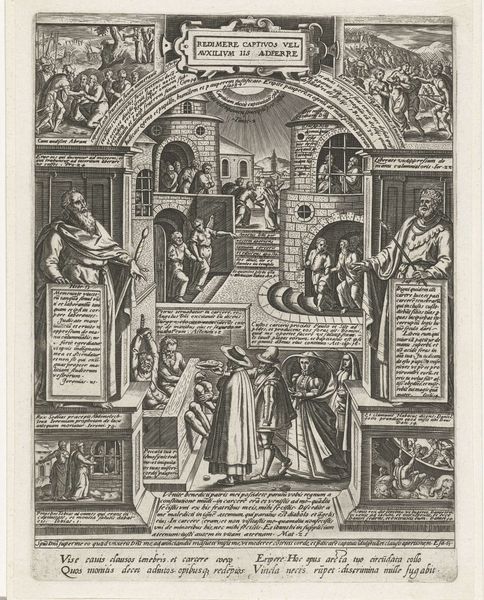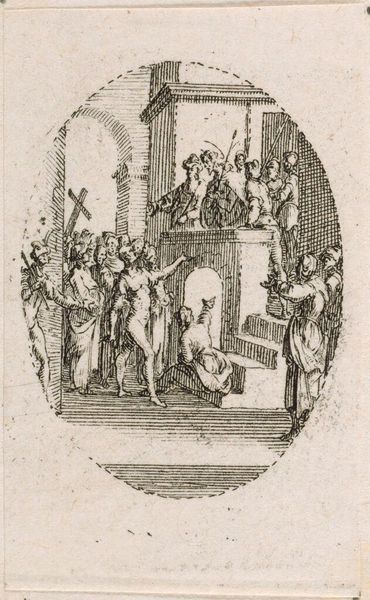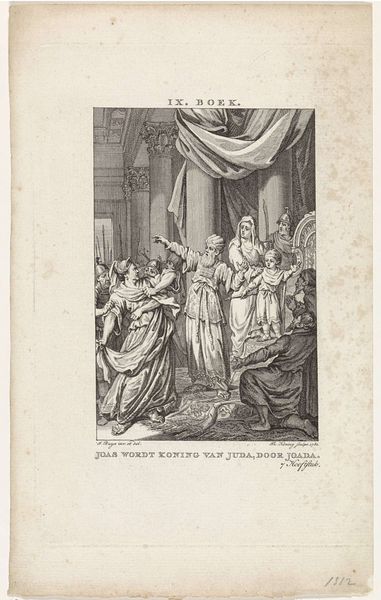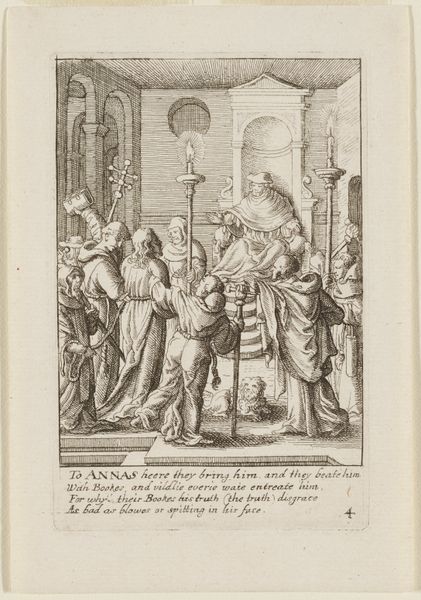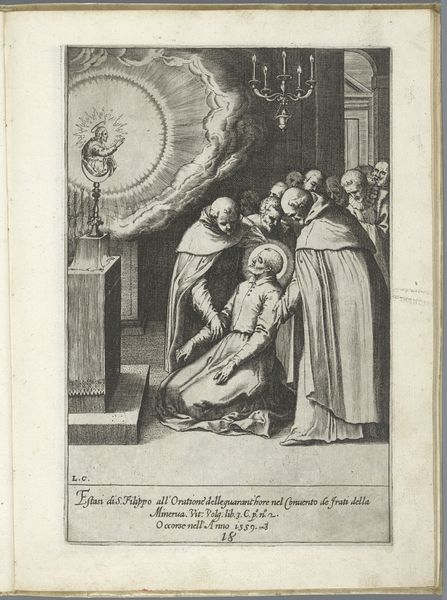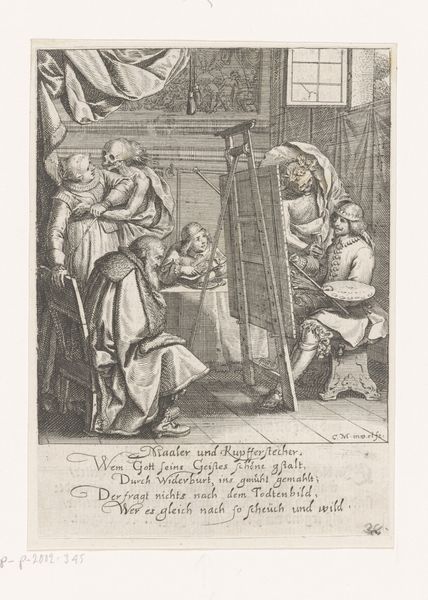
print, etching, engraving
#
narrative-art
#
baroque
# print
#
etching
#
figuration
#
history-painting
#
engraving
Dimensions: 3 5/8 × 2 7/16 in. (9.21 × 6.19 cm) (image)4 1/2 × 3 1/8 in. (11.43 × 7.94 cm) (sheet)
Copyright: Public Domain
Curator: This etching before us, dating from sometime between 1642 and 1654, is Wenceslaus Hollar's "Ecce Homo," currently held at the Minneapolis Institute of Art. Editor: It strikes me immediately as quite bleak, yet there's something intensely theatrical about it. The sharp lines of the etching create a sense of stark drama. And the composition directs my gaze upward. Curator: Yes, Hollar employs etching to construct this intricate narrative, examining the materials and the work itself reveals a stark contrast in symbolic value, that's underscored by the text beneath the image. The Pope’s crown and crozier are of gold but Christ’s cross is wood and his crown is made of thorns. The emphasis on specific religious figures also alludes to historical tensions within Christianity during the early modern period, possibly commenting on papal authority versus spiritual humility. Editor: Precisely. This artwork clearly enters a visual and political dialogue prevalent during that era. The artist depicts an important public, performative moment: Jesus is presented to the people. This isn’t just an image; it is loaded with commentary on the Church's practices and ostentation. Its public display and dissemination via print further amplify these societal criticisms. How was an artwork like this circulated at the time, what were its spaces of reception? Curator: Prints like this served various purposes; beyond their artistic merit, they could act as visual arguments circulating through different social strata. We see how engraving and etching facilitate the rapid reproduction of these ideas, therefore transforming social debates surrounding piety, authority, and truth through accessible art objects. Editor: Looking at this etching today, the interplay between religious iconography, sociopolitical commentary, and material processes provides insightful understanding to those of the early modern world and challenges inherent power structures and societal norms. It definitely leaves one with lingering questions on art, belief, and resistance throughout history. Curator: Indeed. Examining the process of creation and the choice of materials is as enriching as understanding the historical context—ultimately affecting its perception throughout time.
Comments
No comments
Be the first to comment and join the conversation on the ultimate creative platform.
